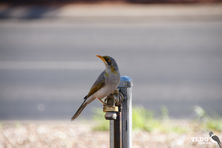
Shoppers Feedback:
Jan 17, 2017
Hello Ros,
I have now paid the invoice, but I would like to write to you just to say a big THANK YOU for getting me the Penguin!
The ChatterMate Penguin became a nice memory for me when I was in New Zealand, and I am so greatful to you for arranging so that I could have it! :-)
Thank you so much!!!!!!!!!!!
Regards,
Malin
Hi Ros,
Many thanks for your very kind email. I really appreciate your prompt reply!
I appreciate your advice regarding the decorations and customs. These are a gift for my daughter’s exchange student family so when she returns home on the weekend I will show her and see if she loves them as much as I do!
Thanks so very much again - I am truly grateful for your kind assistance.
Kind Regards
Bernadette
Ros,
Thanks again for the great customer service. It's a refreshing change!
Best regards,
Trevor
Hey Roz,
Thank you for your emails. Just loved my first order. The cute little Aussie bush critters are going to be used for an office Christmas decoration. My colleagues also liked them and talked about making an order to your site. I'll send you a photo when completed.
I'll be ordering more to send to my daughter's host family in America.
Fabulous service from you.
Kind regards,
Michelle
Thankyou. Order arrived today. One very happy grandson with his new beastly binoculars.
Regards,
Irene
- Home
- Wild Wonders
- Shop
- Aromas of Australia
- Australian Made
- Books
- Book Marks
- Christmas Decoration Sale
- Christmas Decorations
- Clocks
- Drink Holders
- Garden & Outdoor
- Gift Wrapping & Cards
- Home & Giftware
- Jewellery
- Keyrings
- New Products
- Pencils & Pen Holders
- Photo Frames
- Plush Toys
- Plush with Sound
- Sheepskin Rugs
- Stationery
- Stone Carvings
- Toys & Games
- Travel Goods
- Wedding
- Wild Figurines
- Wildlife Safety Products
- Wind Chimes
- Wine Charms
- View All Products
- Wildlife
- Australiana
- Explore
- Contact Us
Yellow Throated Miner

Quick Facts
| Length: | 21 cm |
| Height: | - |
| Weight: | 31 grams |
| Colour: | - |
| Habitat: | Dry forests and woodlands, especially mallee. Also found in parks, gardens and farmlands |
| Food: | Insects, nectar, berries and fruite |
| Predators: | - |
| Status: | Not Present in TAS. Secure in all other states and territories of Australia |
The Yellow-throated Miner is a medium-sized honeyeater, grey above from the crown to the tail, pale grey below with light brown scalloping on the breast to the white rump, with a black face, distinctive yellow forehead and sides of throat. The bare eye skin, bill, legs and feet are also yellow. The wings and tail edges are washed yellow, and the tail tips are white. This species is noisy and sociable, and may be aggressive towards other birds.
The Yellow-throated Miner is very similar to the Noisy Miner but has a grey rather than black crown, a white rump, and a yellow forehead and throat. The rare and endangered Black-eared Miner is so similar that it is hard to distinguish in the field, but it is extremely restricted in its distribution, while the Yellow-throated Miner is widespread.
The Yellow-throated Miner is found across mainland Australia, with the exception of the east coast south of central Queensland, Arnhemland and western Gulf of Carpentia, Cape York or the most arid parts of the interior.
The Yellow-throated Miner is found in dry forests and woodlands, especially mallee. It is also seen in parks, gardens and farmlands.
The Yellow-throated Miner feeds on insects, nectar, berries and fruit, foraging at all levels of the canopy and on the ground. It usually forages in noisy flocks.
The Yellow-faced Miner breeds communally and breeding pairs are often assisted by other members of the group. The loose, cup-shaped nest is built in a tree fork about 3 m to 6 m from the ground and is constructed from twigs and grasses, lined with wool, fur or feathers.
Last Updated: Friday 19th July, 2013
BirdLife Australia - www.birdlife.org.au
BUSH e-TELEGRAPH
Signup for our monthly newsletter the "e-Telegraph"
Quick Links
Home | The Beginning | About The Land Down Under | Wild Wonders | Advertise on Wild Wonders | Christmas Decoration Sale | Christmas Tree Decorations | Drink Holders | Plush with Sound | Stone Carvings | Wildlife Wine Charms | Freebies | Australian Wildlife | Help Our Wildlife | Australiana | Photo of the Month | Explore The Land Down Under | Contact Us | Legal Notices

